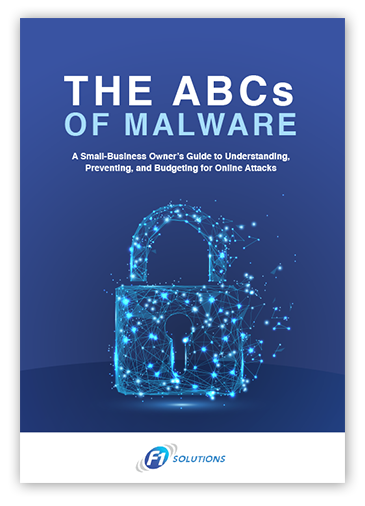It takes just one click on a rogue link, or a press of the Enter key for your company’s sensitive data to be stolen by hackers, and use the information for identity and financial theft. And it’s not surprising why these events happen so suddenly — your employees are susceptible to security breaches.
It’s easy to be fooled
Phishing, ransomware, and macro viruses are just some of the common cyberattacks that affect organizations these days, and these threats all have one thing in common: social engineering.
For instance, ransomware requires users to open an email and download an attachment masquerading as a safe company document. And people will click on innocuous-looking links that will activate malware in the background that silently destroys or steals files.
As a result, companies are expected to invest more in cybersecurity protection. According to IDC, global spending will top $103 billion in 2019, with large enterprises spending the most. This does not mean, however, that small- to medium-sized businesses (SMBs) are less prone to attacks. In fact, cybercriminals are taking advantage of the negligence of SMBs and their employees to further their wrongdoings.
Buying products and services isn’t enough
Some organizations believe that purchasing security products such as antivirus software, firewalls, and even cloud services are enough to protect themselves from attacks. However, this “set-it-and-forget-it” is only one layer in your cybersecurity maturity. Cyberattacks will continue to evolve and become more dangerous.
No matter what technology is put in place, or how much money is spent on protection, employees will still eventually commit mistakes and potentially endanger your data. As such, it’s a good idea to have a proactive approach towards training your people how to recognize a threat and what to do about it. Here are a few ideas to consider:
Download our free eBook!
Read our free ebook: The ABCs of Malware and obtain practical information on improving data security without going broke.
#1. Retrain your employees
Just because you conducted a cybersecurity training in the past year doesn’t mean you won’t have to do it again. Cybersecurity is an ever-changing environment, and hackers will always find new ways to attack businesses of all sizes.
Teach your workforce what phishing scams currently look like. For instance, the presence of multiple grammatical errors was a dead giveaway for a phishing email in the past. But now, hackers have improved on this and are even using the real email designs of the company they’re spoofing to make their email look more legitimate.
In some cases, cybercriminals use the business email compromise (BEC) scheme wherein they pose as C-suite executives and trick an employee to wire money to their fraudulent accounts.
Regularly conduct phishing simulations so you can have an idea of how your employees will react in a real situation.
This is a process where you or your agent would send out fake phishing emails on a regular basis and see who will fall for the bait. Once you gather the results, provide necessary training to those who failed the exercise.
#2. Use multifactor authentication (MFA)
MFA uses more than one user verification method aside from a password, such as a fingerprint or a one-time code sent to the user’s smartphone. By adding another layer of security, even if your employees accidentally leak their password to hackers, the criminals won’t be able to access and steal the data without fulfilling the other security steps.
#3. Create offsite secure backups
Considering that your employees are very likely to compromise your data at any time, it’s a good idea to prepare for the worst. Keep backups of all your important files in an external storage system such as secure cloud solutions or external hard drives. This is key in protecting the integrity of your data. This way, even if your data is compromised due to human error, you can still access another copy.
#4. Have an effective mobile device management (MDM) policy
Mobile devices such as smartphones, laptops, and tablets play an essential role in the modern workplace, and your employees can inadvertently leak your data through them. This is where MDM comes in handy. MDM helps with the remote administration of mobile devices that employees can take out of the office.
One of its significant features is remote data wiping. For instance, if a company-registered personal smartphone gets stolen, MDM can delete all the information contained in the handset to prevent data leaks. Other features include application whitelisting, configuration and patching enforcement, and password policy enforcement.
#5. Partner with a managed IT services provider (MSP)
SMBs can partner with MSPs such as F1 Solutions to ensure total security for your organization. MSPs have IT experts who will proactively monitor your network infrastructure 24/7/365 and stop threats from infecting the system.
We know how hard it is to keep your data protected from cybercriminals. That’s why F1 Solutions offers a comprehensive cybersecurity service that protects every bit of information in your infrastructure. Don’t let small employee mistakes cost you your business. Call us today to know more.



